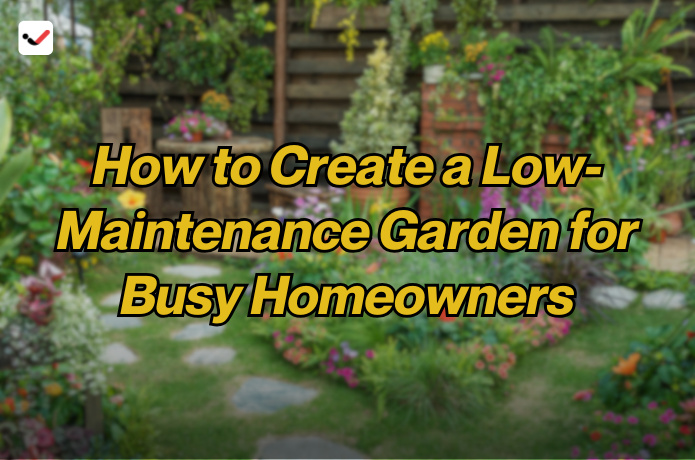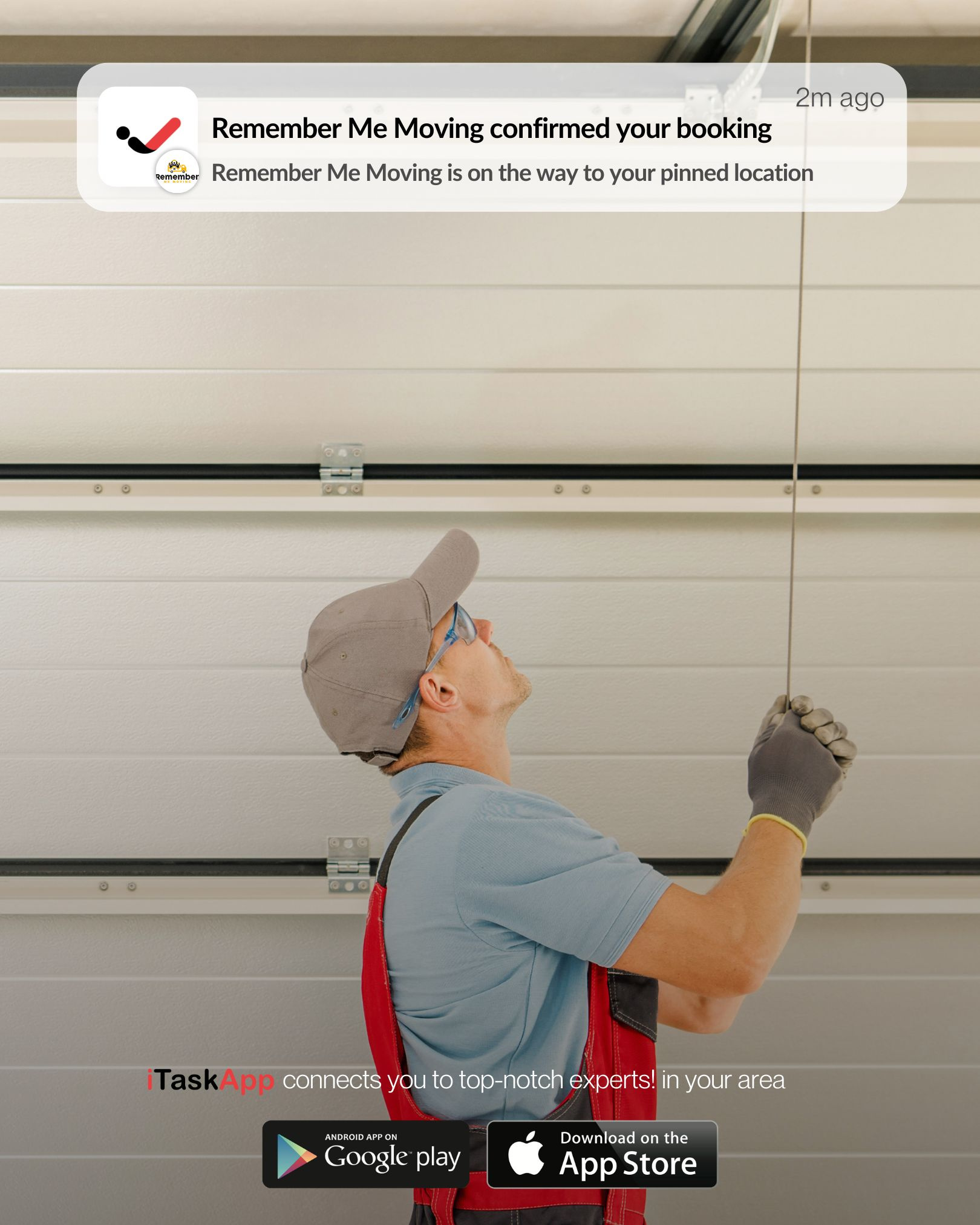How to Create a Low-Maintenance Garden for Busy Homeowners
How to Create a Low-Maintenance Garden for Busy Homeowners

Having a beautiful garden doesn’t mean you have to spend hours working on it each week. For many busy homeowners, the idea of tending to a garden can feel like just another chore. But with some smart planning and a few simple strategies, you can enjoy a vibrant, thriving outdoor space that requires very little upkeep. Whether you have a small balcony or a large backyard, there are practical ways to build a garden that fits your lifestyle and schedule.
A low-maintenance garden focuses on using easy-care plants, efficient layouts, and time-saving techniques. This article will walk you through everything you need to know—from choosing drought-tolerant plants to smart backyard garden design. You’ll also find tips for small space gardening, container gardening, and even edible and modern garden styles. These easy gardening tips are perfect for both seasoned gardeners and anyone just starting out.
Start with a Simple Garden Design
When creating a low-maintenance garden, the first step is to plan a design that works for your space and time. Whether you have a big lawn or a small patio, smart garden planning makes a big difference.
Keep it Simple: Avoid complicated shapes or too many plant beds. Curved lines or rectangular layouts are easier to mow and maintain.
Use Hardscaping: Add patios, gravel paths, or stone borders to reduce the amount of space that needs weeding or watering. These features add beauty without adding work.
Choose Zones: Divide your space into zones, such as a seating area, a planting zone, and a storage space. Each zone has a clear purpose and helps keep things organized.
Limit Lawn Size: Lawns need regular mowing, watering, and care. Reducing lawn space by adding mulch beds, native plants, or low-growing groundcovers can save you lots of time.
Planning ahead with a clear and simple layout is the key to building a garden that won’t demand constant attention.
Choose Low-Maintenance Plants
The plants you pick will have the biggest impact on how much care your garden needs. Choosing the right ones can save you hours of work each month.
Drought-Tolerant Plants: These plants survive well with little water. Good options include lavender, sedum, ornamental grasses, and succulents. These are perfect for people who forget to water or live in dry areas.
Native Plants: Plants that grow naturally in your region are adapted to your local soil and weather. They need less water, fewer chemicals, and less effort to thrive.
Perennials: These plants return every year. You won’t have to plant them again each season, which saves time and money. Try daylilies, hostas, black-eyed Susans, or coneflowers.
Evergreens: These plants keep their color year-round. They don’t require replanting and add structure to your garden.
Low-Maintenance Flowers and Shrubs: Look for disease-resistant and slow-growing varieties. These require less trimming, spraying, and fussing.
Keep your plant list short. A few types of hardy plants arranged in groups will be easier to manage than a garden filled with dozens of different species.
Use Mulch for Less Work
One of the best easy gardening tips is to use mulch around your plants. Mulch offers several benefits:
Keeps Weeds Away: Mulch blocks sunlight, which helps stop weeds from growing.
Holds in Moisture: It helps the soil stay damp longer, so you won’t need to water as often.
Protects Roots: It keeps the ground temperature stable and protects plant roots.
Looks Neat: Mulch gives your garden a tidy and finished appearance.
Apply mulch 2 to 3 inches deep around trees, shrubs, and flower beds. Choose natural options like bark chips, shredded leaves, or straw.
Automate Watering Systems
Watering can be one of the most time-consuming tasks in gardening. The good news is you can automate it easily:
Drip Irrigation: This system delivers water slowly to plant roots. It reduces water waste and works well for flower beds and vegetable gardens.
Soaker Hoses: These hoses let water seep directly into the soil. They are easy to install and great for rows of plants.
Timers: Attach a timer to your hose or irrigation system. Set it to water in the early morning when it’s most effective.
Self-Watering Containers: These are perfect for container gardening. They hold extra water at the bottom so your plants stay hydrated longer.
By automating your watering, you save time and ensure your garden stays healthy.
Go for Container Gardening in Small Spaces
If you don’t have much room, small space gardening with containers is a great option. It’s also very low-maintenance.
Flexible Layouts: You can move containers around to catch the sun or protect them from bad weather.
Fewer Weeds: Containers usually don’t get many weeds.
Better Soil Control: You can use potting soil that drains well and supports plant growth.
Easy to Decorate: Use different sizes, shapes, and colors of pots to match your outdoor decor.
Grow herbs, flowers, or even vegetables like cherry tomatoes and peppers in containers. Just remember to choose pots that are big enough to hold moisture.
Add Groundcovers Instead of Grass
Lawns can be a lot of work. If you want a green look without mowing, try groundcovers instead.
Creeping Thyme: Low-growing and smells great.
Sedum: A succulent that spreads easily and survives dry spells.
Clover: Soft underfoot and doesn’t need much mowing.
These plants spread to cover bare soil, suppress weeds, and add texture to your yard.
Try Raised Beds for Easy Gardening
Raised garden beds are easier to maintain than traditional in-ground beds.
Better Drainage: Raised beds help prevent overwatering and root rot.
Easy Access: You won’t have to bend over as much.
Fewer Pests: Many pests don’t climb up into raised beds.
Defined Borders: Keeps your garden organized and clean-looking.
Raised beds work well for flowers, herbs, and vegetables. Fill them with a mix of compost and soil for the best results.
Garden for All Seasons
Choose plants that offer interest throughout the year. This helps keep your garden looking good with less effort.
Spring: Bulbs like daffodils and tulips.
Summer: Coneflowers, lavender, and salvia.
Fall: Ornamental grasses and mums.
Winter: Evergreens and red-twig dogwood for color.
A seasonal garden needs less replanting and keeps your space inviting all year long.
Consider Edible Garden Options
If you want a garden that gives back, add a few edible plants. They can be easy to grow and care for.
Herbs: Mint, rosemary, basil, and thyme are low-maintenance.
Fruit Bushes: Blueberries, raspberries, and strawberries need little attention once planted.
Vegetables: Lettuce, spinach, and cherry tomatoes grow well in pots or small beds.
Even a tiny edible garden can provide fresh ingredients and save you trips to the store.
Use Vertical Gardening to Save Space
Vertical gardening is great for balconies, patios, or small yards. It helps you grow more plants in less space.
Hanging Baskets: Great for flowers and herbs.
Wall Planters: Attach to fences or walls to hold small plants.
Trellises: Support climbing plants like beans, peas, or flowering vines.
Vertical gardens are simple to maintain and add interest to dull walls or fences.
Limit Tools and Supplies
Don’t overwhelm yourself with tools. Just a few basics are enough:
Hand trowel
Pruning shears
Garden gloves
Watering can or hose
A rake or a broom for cleaning up
Store tools in a weatherproof box or shed to keep them organized and ready to use.
Stick to a Weekly Garden Routine
Spending just 10–20 minutes a week in the garden can keep everything looking great.
Check for weeds and pull them out early.
Remove dead flowers or leaves.
Water if needed.
Check that your mulch is in place.
Keeping a short, regular routine prevents problems from getting out of hand.
Low-Maintenance Modern Garden Ideas
If you like a clean, sleek look, modern garden styles are naturally low-maintenance.
Use Gravel Beds: Instead of lawns, fill areas with gravel and a few bold plants.
Choose Sculptural Plants: Agave, ornamental grass, and boxwood are stylish and easy.
Add Outdoor Lighting: Solar lights add charm and require no upkeep.
These designs use fewer plants and more structure, making them ideal for busy lifestyles.
A low-maintenance garden is perfect for anyone who wants to enjoy outdoor beauty without the hard work. By using easy gardening tips, picking the right plants, and setting up helpful tools like mulch and watering systems, you can create a space that works for your schedule. Whether it’s small space gardening, container gardening, or full backyard garden design, you have many options.
Busy homeowners don’t need to give up on having a garden. With smart planning and a few weekly habits, your yard, patio, or balcony can bloom beautifully all year long with very little effort. Happy gardening!

